What Are Run-Flat Tires and How Do They Work?
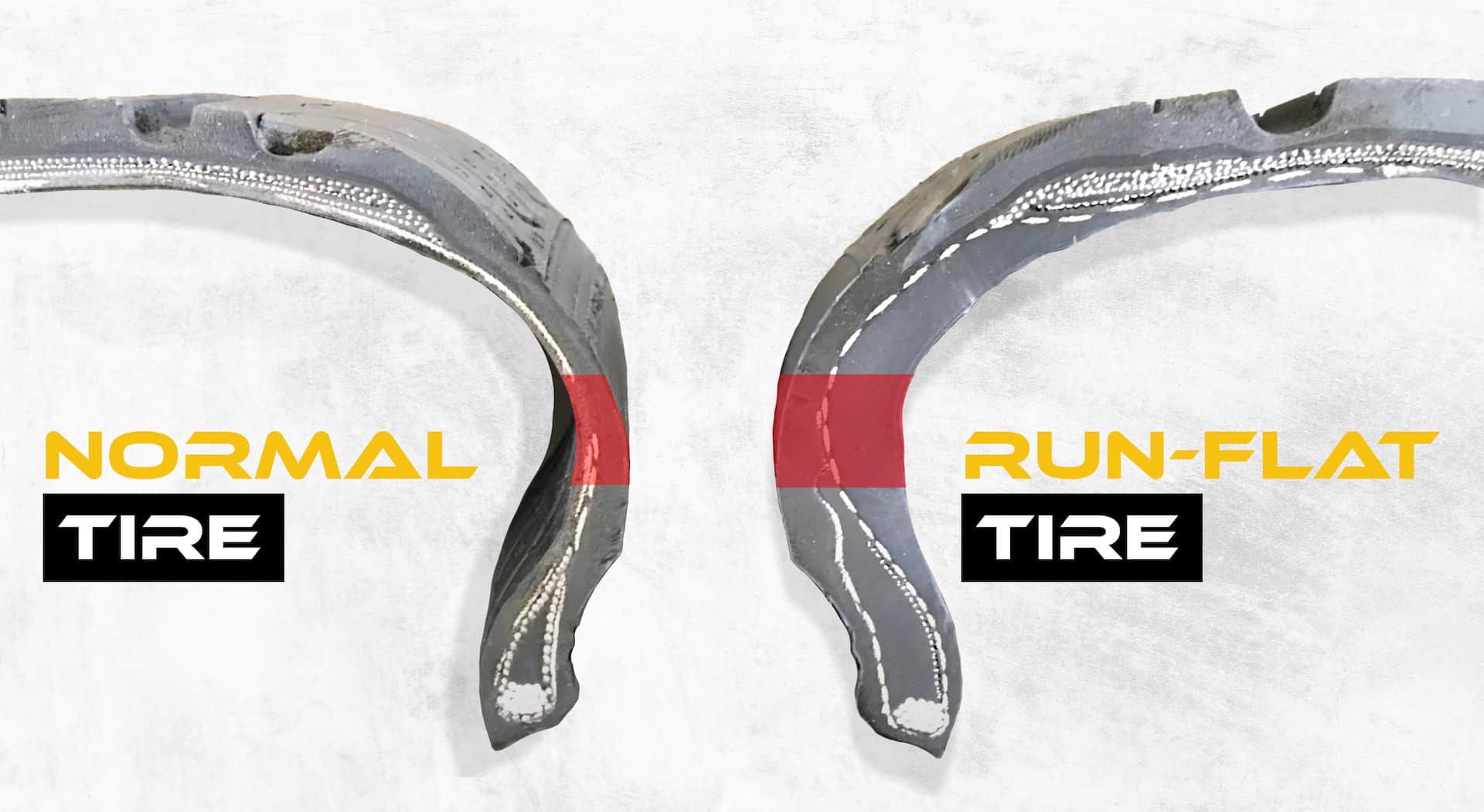
Do you ever worry about getting a flat tire while driving? What if we told you there’s a type of tire that can keep you moving even after a puncture? Introducing Run-Flat tires – specialized pneumatic tires designed to functione safely even after tire pressure loss.
In this blog post, we’ll take an in-depth look at what run-flat tires are, how they work, and their advantages and disadvantages.
What are Run-Flat Tires?
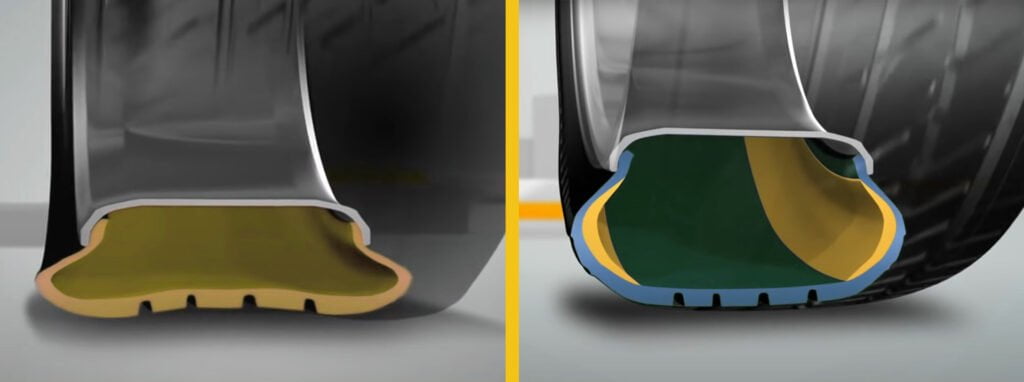
Run=flat tires use reinforced sidewalls that are designed to be stronger than traditional tires, allowing them to safely carry the weight of the vehicle even when there is no air pressure in them.
The construction of a run-flat tire allows continued operation after the loss of air pressure up to the speed and distance specified by the tire manufacturer; usually up to 50 miles at speeds up to 50 mph.
Benefits of Run Flats
Mobility after a flat
The main benefit of run-flat tires is their ability to provide mobility after a flat tire. This means that if you experience a flat tire while out on the road, you will still be able to drive your car until you can get it repaired or replaced. This is especially useful in emergency situations where time is of the essence and getting help quickly is essential.
Safety
Run flat tires also offer increased safety benefits as they reduce the risk of an accident due to sudden deflation or blowouts caused by low tire pressure. The reinforced sidewalls also provide better handling and stability, making it easier for drivers to stay in control during sudden turns or maneuvers on wet or icy roads.
Less weight and more space
Another benefit of choosing run-flat tires is their lighter weight compared with traditional tires, which can result in improved fuel economy and performance due to less rolling resistance from having less mass on each wheel hub assembly. Additionally, since run-flats don’t require spare tires or jacks, they free up more storage space inside your vehicle for other items such as luggage or groceries.
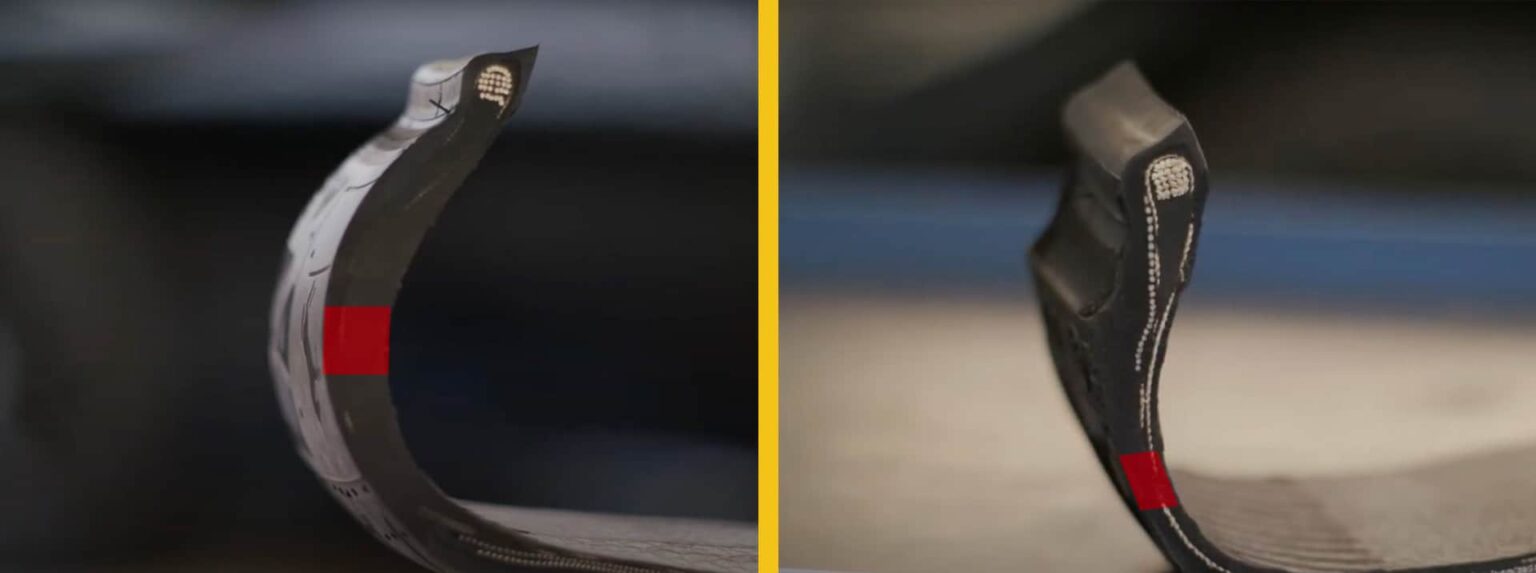
What Are The Disadvantages Of Run Flat Tires?
Costly Replacement
One of the drawbacks of using run-flat tires is the cost. These tires carry a higher price tag than traditional ones, sometimes double or even more. This makes run-flats an expensive option for those looking to replace their tires.
Reduced fuel economy
Another downside is reduced fuel economy. Run-flats are heavier than regular tires, which means your car has to work harder and use more fuel to get up to speed. This can add up over time and cost you money at the pump.
Availability
Availability is another issue with run-flats. While they can be found in many stores, it’s not always easy to find the size or type you need for your vehicle. You may have to order them online or wait for a shipment from a specialty store.
Harsher Ride
Finally, run-flats provide a harsher ride than standard tires due to their reinforced sidewalls and stiffer construction. This makes them less comfortable on bumpy roads and can make your drive more unpleasant overall.
Can run flats be repaired?
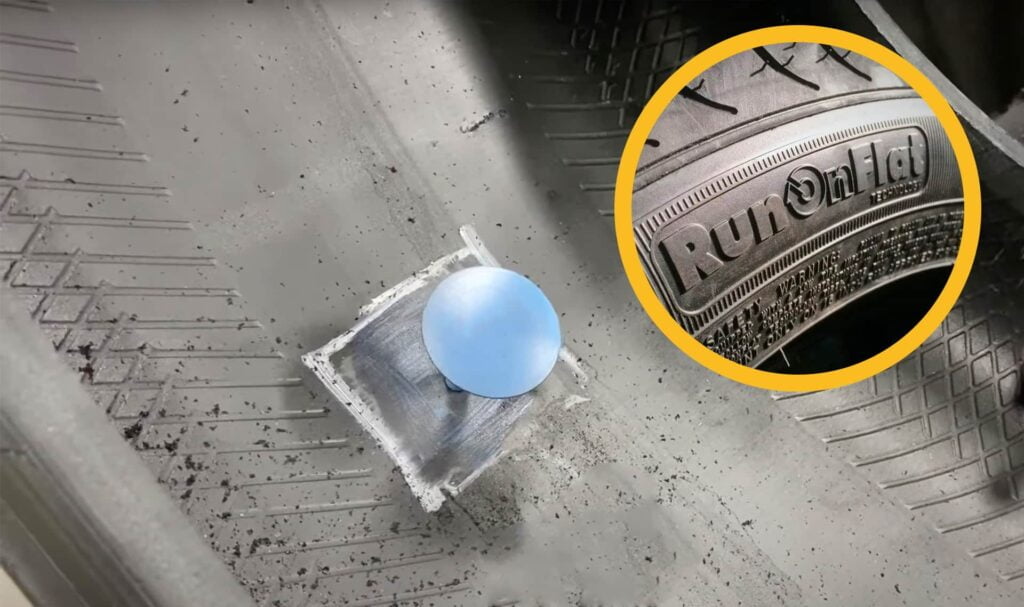
Most tire manufacturers allow their run-flat tires to be repaired if they have been punctured.
However, it’s important to consider the manufacturer’s advice and guidelines, especially if you drove with a punctured tire.
Different tire manufacturers have different policies regarding the repair and replacement of run-flat tires. Tire brands like Dunlop and Bridgestone are advising inspecting the tire’s inner liner to determine if it’s safe to repair. If the inner liner has not been damaged, patching is perfectly fine.
On the other hand, Pirelli does not recommend repairing run-flat tires as it is difficult to determine the extent of damage caused by driving with a flat tire. Thus it is better to replace the tire.
How to Identify Run Flat Tires
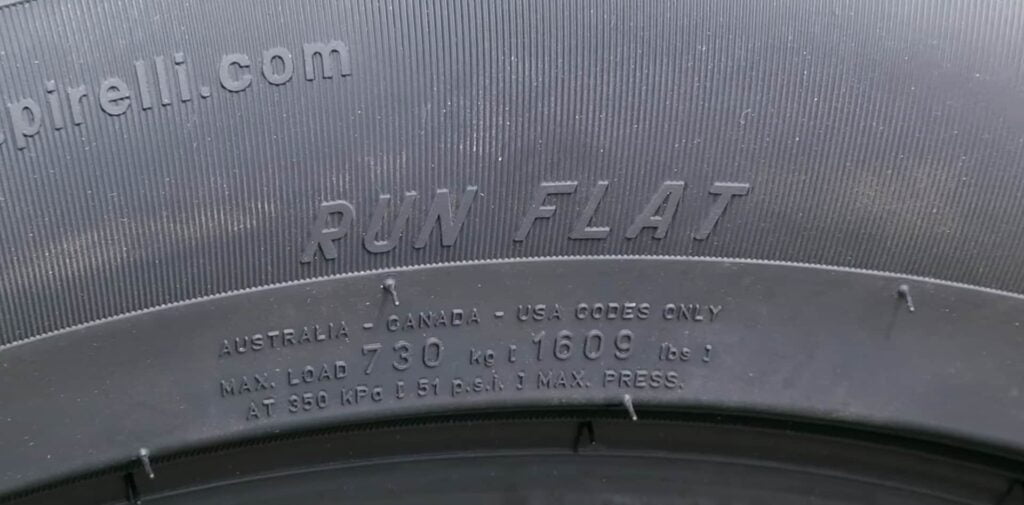
If your tires have been marked with one of the following codes, then you can confidently assume they are run-flat tires:
These codes all essentially mean that you can use your tires while punctured but you must keep to a speed of under 50mph and only travel up to 50 miles.
Run-flats vs. traditional tires
Run-flat tires and traditional tires offer different benefits. As previously mentioned, the main difference between traditional tires and Run-flat tires is that the Run Flats are designed to be able to drive for a short distance after a puncture, while traditional tires will go flat immediately.
Run-flats have cooling fins on the sidewall which helps dissipate heat, allowing you to drive further after a puncture. However, they can be more expensive than regular tires and may not fit all vehicles.
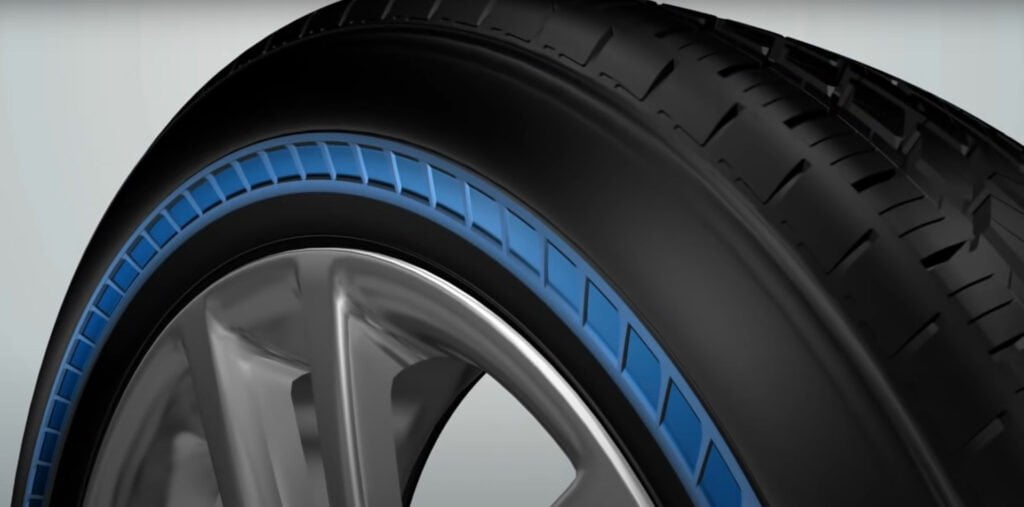
Traditional tires are generally less expensive than run-flats and come with a spare tire and tire in case of an emergency. However, they will go flat immediately if punctured, so it’s important to check your tire pressure regularly and keep an eye out for any signs of wear or damage.
When deciding between run-flat tires and traditional tires, consider your budget as well as how often you plan on driving long distances or in areas where roads may be rough or uneven. Both types of tires offer their own advantages, so make sure to research both options before making your decision.
Can I change run-flat tires with non-run flats?
The answer is yes! You can replace four run-flat tires with four conventional tires. If you do choose to switch out your run flats for regular tires, make sure that the new tires are compatible with your car and meet all safety requirements.
Types of run-flat tires
There are two primary types of run-flat tire systems: the self-supporting system and the support ring system (also called the auxiliary supported system).
The self-supporting system is the most common type of run-flat technology in use today. It uses reinforced sidewalls that can support the weight of the vehicle even when there is no air pressure in the tire. This allows you to drive at reduced speeds until you can get your tire repaired or replaced.
The support ring system, also known as an auxiliary supported system, uses an inner ring inside the tire that provides additional support when there is no air pressure in the tire. This allows you to drive at higher speeds than with a self-supporting system, but it does require more maintenance and care than a self-supporting system.
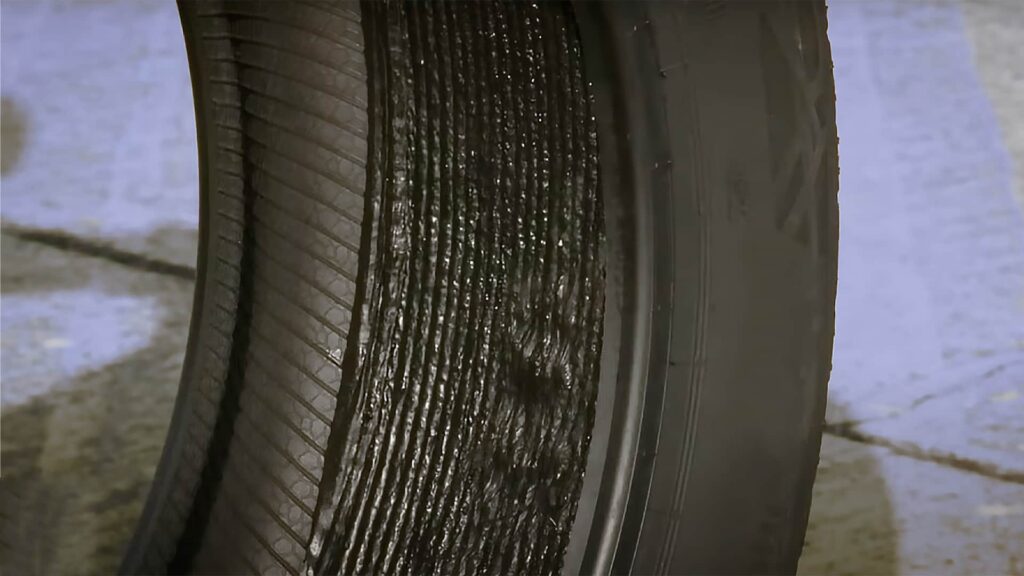
In addition to these two primary types of run-flat tires, there are also other technologies that allow continuing your journey after getting a puncture. One example would be the self-sealing tires which use a special sealant that covers the punctures as they occur.
Bottom line: Is run-flat technology worth it?
Run-flat tire technology can be a great asset to have in your vehicle. Run-flat tires offer peace of mind, knowing that you won’t be stranded if you get a flat tire.
However, it’s important to keep in mind that run-flat tires tend to cost more than regular tires and may not provide the same level of comfort or performance.
FAQ
How Long Do Run-Flat Tires Last?
Run-flat tires are designed to last as long as regular tires, with some manufacturers claiming that they can last up to 50% longer.
The lifespan of a run-flat tire depends on the type of tire, the driving conditions, and how well it is maintained. Generally, run-flat tires should be replaced after 6 years or when the tread depth reaches 2/32 inches.
Can I Replace BMW Run-Flat Tires With Regular Tires?
Run-flat tires are a great feature to have on your BMW, but they can be expensive to replace. The good news is that you don’t have to replace them with run-flat tires. You can replace them with regular tires, which are often cheaper than run-flat tires.
Can I Leave A Run-Flat Tire Overnight?
It is possible to leave a run-flat tire overnight, but it is not recommended. Run-flat tires are designed to remain safe and functional for a limited time with no air pressure. Leaving the tire flat for an extended period of time can cause additional damage to the tire.
Why Are Run-Flat Tires So Expensive?
Run-flat tires are usually more expensive than regular tires because of the extra technology and engineering used to create them.
Run-flat tires have reinforced sidewalls that allow the tire to remain safe and functional with no air pressure for a limited time, so they have to be constructed differently than regular tires. This extra technology comes at an additional cost, making run-flat tires pricier than conventional tires.
